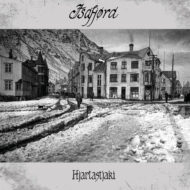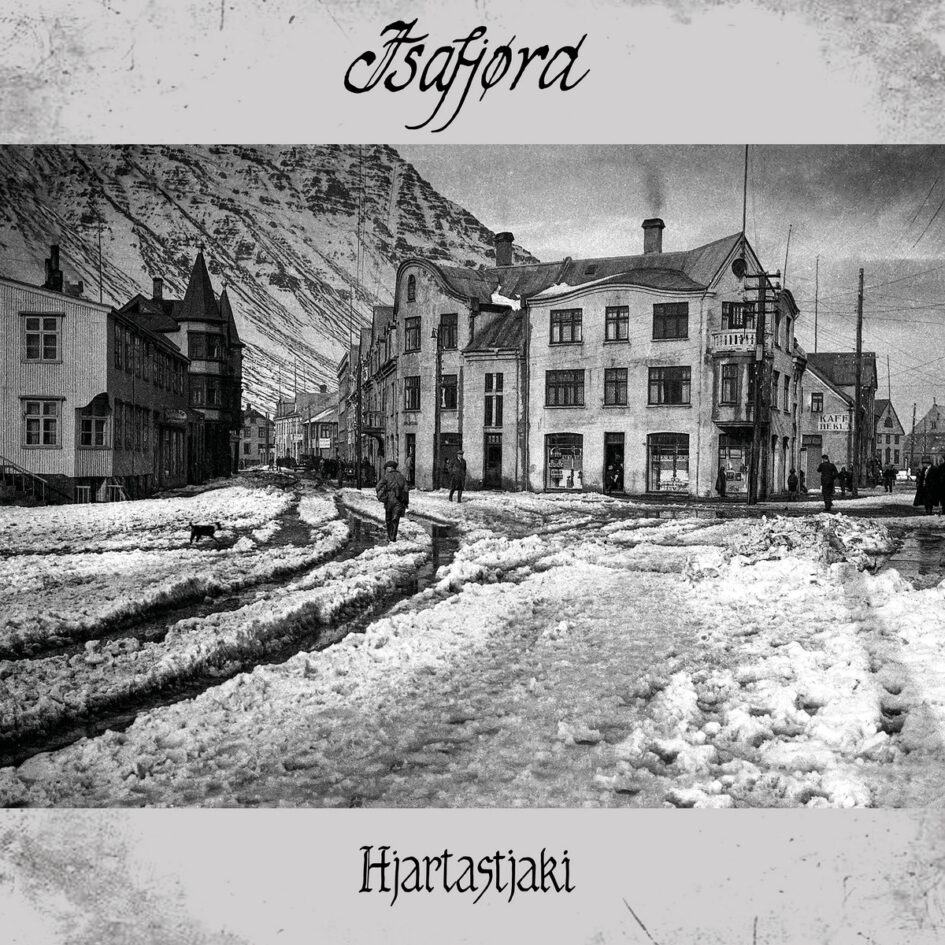 The name Ragnar Zolberg rang a bell to me, Ragnar being one half of Isafjørd. I narrowed it down to ProgPower contacts, but also research revealed that Ragnar is the artist behind Sign. The other artist and composer is Aðalbjörn Tryggvason, who amongst other things is known for his work with Sólstafir. As is evident from the names, this is a project from Iceland and with that is the promise of desolate and atmospheric scenes over this work by the artists from Ísafjörður, which is a remote place even by Icelandic standards. The album’s title means “Jack of Hearts”.
The name Ragnar Zolberg rang a bell to me, Ragnar being one half of Isafjørd. I narrowed it down to ProgPower contacts, but also research revealed that Ragnar is the artist behind Sign. The other artist and composer is Aðalbjörn Tryggvason, who amongst other things is known for his work with Sólstafir. As is evident from the names, this is a project from Iceland and with that is the promise of desolate and atmospheric scenes over this work by the artists from Ísafjörður, which is a remote place even by Icelandic standards. The album’s title means “Jack of Hearts”.
I confess that it was so quiet at the beginning that I didn’t think it had started. When it does, the beat is sombre, tribal almost, and the progress is such that it’s like a walk through the wilderness but there’s colour and life in the guitar work. As the drum work hypnotises us, “Falin Skemmd” (Hidden Damage) initially has a quiet vocal line. It’s a haunting piece to start, having a post-rock element but a disturbing edge thanks to its imploring vocals. “Mín Svarta Hlið” (My Black Side) is then a quiet ambient piece, which lyrically hinges on its title. In its gloom lies a simple beauty. We are left to imagine as progress is dreamy and languid. The piano introduces the title song. The drum shuffles in a sort of trip-hop style. The gloom intensifies. Whilst I don’t know what it’s about as it’s in Icelandic, I can say that it’s emotional and depressive. If that was depressive, Heiðin (The Heathen) takes it a notch further. I have been to innermost Iceland, and whilst I was in awe of its unique natural and often barren landscape, I have to say I found it uplifting rather than shrouded in gloom and melancholy. But this is the interpretation of Messrs Zolberg and Tryggvason, and who am I to argue.
“Kuldaró” is more reflection to the accompaniment of minimalistic piano work. To my surprise over it bursts into life over the last minute, strangely and I’m sure accidently sounding like the main theme to “The Eye of the Tiger”. Now that was unexpected, and I’m not sure if this was meant to convey the contrast in the landscape or the season. It was unsubtle if it was. “Fjord of Hope” takes us back to the misty melancholy and gloom. Laced with an eerie sound, this one has lyrics in English. It’s a heartfelt song but I couldn’t find any hope in it. This seemed to be more floods of tears than fjords of hope. Nice sliding guitar work though, and a powerful ambience in a quiet and reflective way. “Njálssaga” is almost a continuation but with a heavier guitar sound and backed by the organ. At this point I was half expecting Pink Floyd’s David Gilmour to come in, such is the progressive ambience, and that continues but the lyrics revert to Icelandic and with that the prevailing mood takes us to a different place. There is then a wonderfully dreamy passage, which juxtaposes with the echoing cries of the vocalist, before a powerful guitar passage intervenes. Where I had struggled to connect to much of what had gone before, I greatly appreciated the depth and beauty of this one. “Andvök” (Breathless) closes the album. The beat is typically slow and the vocals reflective. The beauty lies in the post-rock style guitar work, which builds up in strength and power to provide an impressive end.
Undoubtedly “Hjartastjaki” has beauty and is a reflection on a natural remote landscape away from noise and urban scenes. Taken on that level, it is a personal and intense interpretation by two talented and thoughtful musicians. Mystifying or mystical? If I were to choose, I’d opt for the former but I appreciate that a more sensitive soul might say otherwise. What I would say is that the Isafjørd duo are being true to themselves and have injected nothing artificial or out of context in this music of atmospheres and landscapes. But whilst appreciating the genuineness and the quality and cohesion of the musicianship, I did find a lot of “Hjartastjaki” to be rather depressing.
(6.5/10 Andrew Doherty)

28/12/2023 at 10:12 pm
Andvok hit me like a wall. I need the lyrics.